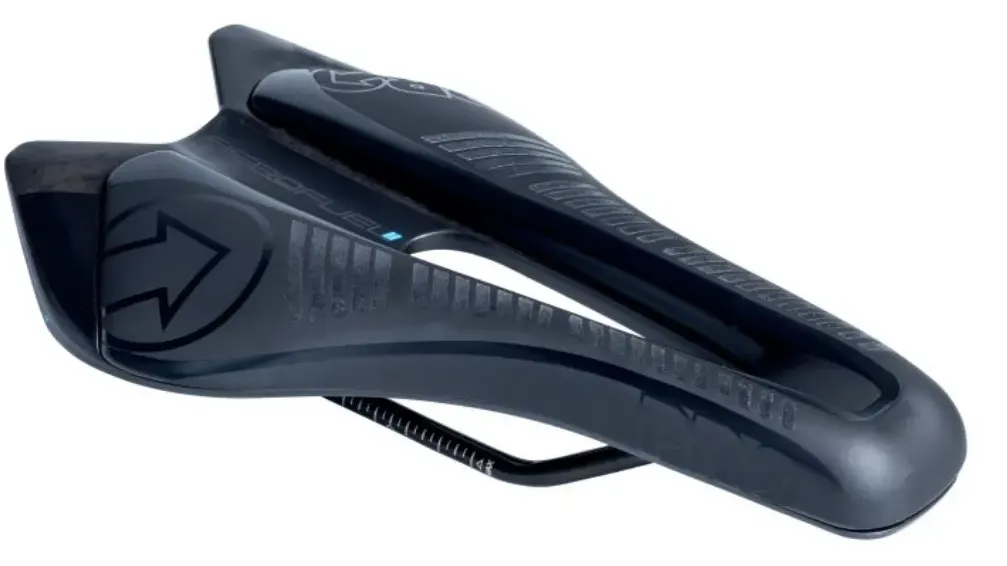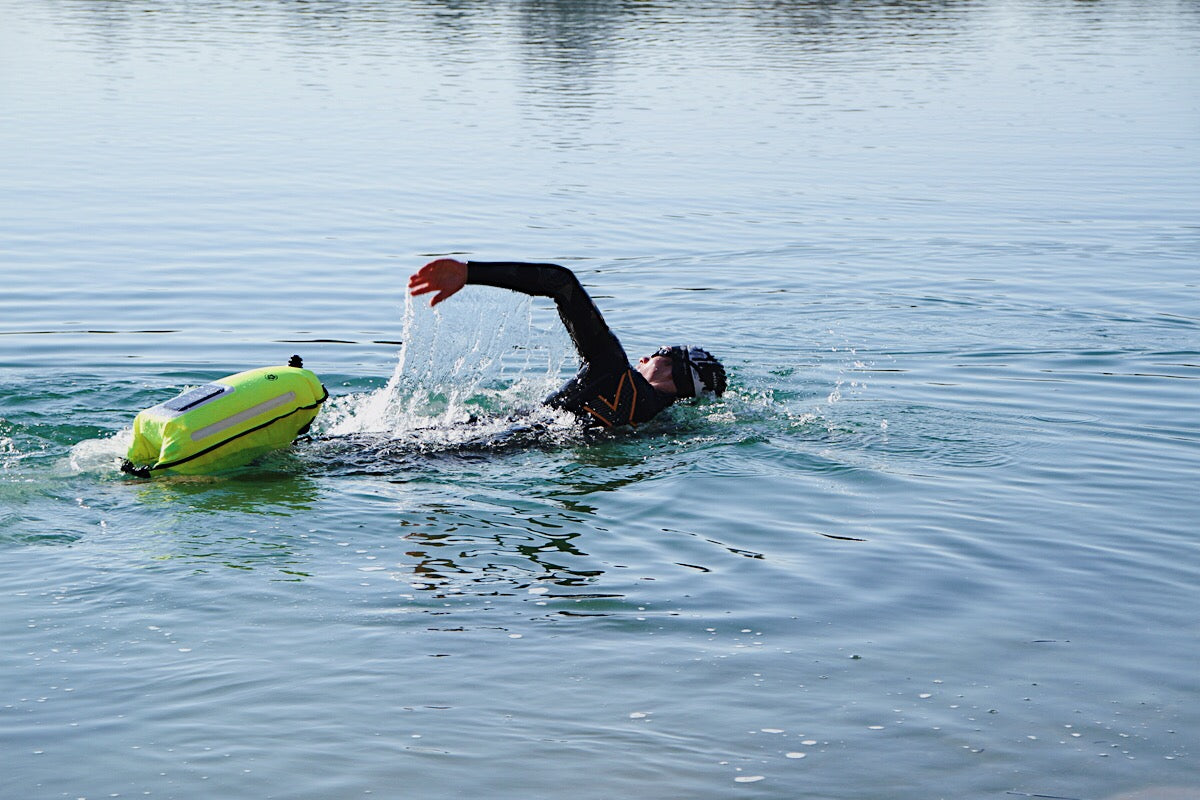The saddle is the most important and at the same time most sensitive point of contact with the bike. It has a decisive influence on the quality of the entire sitting position: the development of power, stability and comfort largely depend on the sitting position on it. "Conventional" saddles are only suitable to a limited extent, especially for the low, more aggressive riding positions, since they usually cause pressure pain on the sensitive tissue, making long-term riding in these positions almost impossible. We will show you what is important when it comes to the saddle and which are our favorites for powerful and pain-free riding.
Stephan Schepe, triathlon.de bike fitting specialist:
"During our bike fittings , it is noticeable again and again that many saddles are found to be very uncomfortable, especially in deeply bent, sporty riding positions, and are then often the limiting factor for a more effective seating position. This applies above all to positions that are designed to be sporty and aggressive : Time trial machine, racing bike with triathlon attachment, but also the pure racing bike posture can be affected by this. The reason for this is the changing load distribution on the saddle itself."
Sitting bumps are not the decisive criterion
The sit bones (also called "sitting bones") are the lowest part of the pelvis, they easily absorb the majority of the weight load when sitting normally, including on the bicycle saddle - but primarily when sitting relatively upright. Common method when choosing a saddle: the distance between the ischial tuberosities is measured and on this basis a saddle is recommended that only reflects this small anatomical section, but disregards the requirements for the overall sitting position.
The problem: with sporty racing bike or time trial positions, the seat bones are increasingly relieved of pressure, since the load distribution is shifted further forward due to a stronger tilting of the pelvis and now increasingly burdens the pubic bone arch and the "perineal area".
A brief excursion into anatomy: the right and left branches of the pubic bone run further forward from the two sit bones and finally meet in the middle of the pubic arch. The bony pubic rami can also be moderately weight-loaded in a low sitting position, while the pubic arch should be completely relieved of pressure.
The sensitive soft tissues that lie exactly between the pubic rami are called the "perineal area" . A large number of nerve and blood vessels run here, which are sensitive to pressure under weight and can trigger feelings of numbness .
With a standard saddle, the following scenario often arises :
With increasing tilting of the pelvis, the weight load is no longer absorbed by the seat humps on the rear, central seat as described.
Instead, the buttocks roll forward over the pubic rami - however, these no longer have a contact surface on the saddle, but then mostly lie to the side next to the narrow tapering saddle nose. As a result, the perineal area rests on the narrowest part of the saddle and thus carries the entire weight. Even the best cycling shorts can no longer compensate for this strain.
Consequence: Since the load distribution on the saddle in lower seating positions shifts primarily in the direction of sensitive tissue structures, suitable saddles should take these anatomical peculiarities into account. In the following we present you the best saddle models, which take the following criteria into account:
- deep, aerodynamic sitting posture while ensuring the greatest possible pressure relief
- Biomechanical improvement in power transmission in the aero position thanks to the seat surface being shifted forward
Road bike position, standard saddle
Aero position, standard saddle
Aero position, triathlon saddle
ISMPS 1.1
ISM has been a specialist in time trial specific saddles for many years. An innovative saddle concept was developed together with urologists, which has become established in triathlon primarily due to the pressure relief in the more aggressive aero position. ISM has been the most ridden saddle brand at Ironman Hawaii for years (source: Kona Bike Count).
The initially unusual shape with the divided saddle tip makes sense due to the described pressure load in the aero position: the forward-leaning pelvis lies with the two branches of the pubic bone exactly on the “croissants” of the saddle, the weight is evenly distributed over a larger contact surface. The soft tissue between the contact surfaces is thus completely pressure-relieved, the pubic arch is also pressure-free in front of the saddle tip. The wider, divided saddle tip initially feels unfamiliar when you try it on for the first time, but the saddle shows its strengths in long-lasting aero posture through the forward shifting of the entire seating position and the great seating comfort.
Test it now: you can test the ISM PS 1.1 with us. click here .
FIZIK TRANSIRO MISTICA
Fizik modified this concept a bit with the Mistica: the special feature is its short, noseless shape. The saddle is made to sit or lie on the front half of the saddle, as the soft tissues that would normally rest on the pointed saddle nose are in this case completely in front of the blunt saddle nose and are not subjected to any pressure load. Here, too, the weight rests on the pubic rami and is distributed over a larger area. A slight recess in the middle of the saddle should provide additional relief. The non-slip upper material also ensures a good grip on the saddle without having to keep pushing yourself into position.
Particularly valuable for triathlon: the accessories for the saddle already include a bottle cage mount for attaching either one or two bottle cages behind the saddle.
Test it now: you can test the Fizik Mistica with us. click here .
SELLE ITALIA IRON EVO
The Iron Evo was developed in cooperation with the double Hawaii champion Patrick Lange with the aim of a long-lasting optimal sitting position. Here, too, the shape clearly indicates the functionality. The wide cut-out in the middle serves to relieve pressure on the sensitive tissue and continues to the split saddle tip. The seating position is clearly shifted forward to improve power transmission in the aero position. In a more upright riding position (e.g. uphill), the pelvis tilts back again, the hip angle opens and the seat bones then lie centrally on the wide part of the saddle.
Test it now: you can test the Iron Evo with us. click here .
PER AEROFUEL
The shape of the Aerofuel comes closest to the "classic" saddle design. However, the wide relief rail is also the decisive feature for a sporty, aggressive seating position. The short, also blunt saddle nose is practically unnoticeable in the deeply bent position. The Aerofuel also combines the demand for an aerodynamically easy to ride position and optimization of power transmission with the best possible load distribution in a very good and consistent way.
Test it now: you can test the Aerofuel with us. click here .
Which saddle is right for me?
You only know that when you sit on it. Every butt is different - the smallest anatomical differences can have a major impact on the individual perception of a saddle. So if your training colleague feels particularly comfortable on his saddle, that does not necessarily mean that you can also get along with this model, especially since the individual seating position also varies. Therefore we recommend: test!
- Our test concept
From now on we offer you the opportunity to rent one or more saddles and test them extensively for a week.





















1 comment
Jörg Schweinfurth
Ich würde gerne den FIZIK TRANSIRO MISTICA kaufen, aber ausser des Berichtes kann man den Sattel leider nicht in den Warenkorb legen